 United Airlines and Quaker Oats. The fitness club at Union Station and the parent company of radio station WVON. The Chicago Symphony Orchestra and Spertus Institute of Jewish Studies. Dozens of housing developments.
United Airlines and Quaker Oats. The fitness club at Union Station and the parent company of radio station WVON. The Chicago Symphony Orchestra and Spertus Institute of Jewish Studies. Dozens of housing developments.
[pullquote]This TIF investigation project won first prize in the Society of Professional Journalists’ Region 5 Mark of Excellence Awards in April 13-14, 2012.
[/pullquote]
These companies and nonprofits were among dozens promised subsidies totaling nearly $1.2 billion in tax increment financing (TIF) over the last decade, according to a four-month investigation conducted by a team of Columbia College Chicago journalists for ChicagoTalks.
Nearly half – or about $600 million – of all private-sector subsidies approved by the city since 2000 was earmarked for companies. Another $340 million was set aside for housing developments, while approximately $200 million was authorized for culture institutions, theaters, hospitals and other nonprofits.
This story was reported by Caitlin Bukowski, Ellyn Fortino, K. Herron, Becca James, Meghan Keyes, Tony Merevick, Margaret Smith, Taryn S. Smith and Mika Tatich. Dan Weissmann assisted with data analysis. Derek Eder created the searchable map.
Critics of the controversial program – the centerpiece of the Daley administration’s economic development efforts – say this new analysis offers more evidence that TIF districts do little to help Chicago’s most-blighted neighborhoods.
A searchable map ChicagoTalks created of the 171 TIF projects finalized between Jan. 1, 2000, through July 30, 2010, shows more than half of the private-sector projects are clustered in or near the Loop. Few if any projects can be found in many of Chicago’s most economically distressed communities on the West and South Sides.
TIF districts were “created to promote economic development in blighted areas, and that’s really not even the case anymore,” said Kate Piercy, director of government reform at the conservative Illinois Policy Institute. “I mean we’ve got TIFs in the Loop. We’ve got TIFs . . . in areas that nobody in their right mind can really call blighted.”
But Toby Rittner, president and CEO of the Columbus, Ohio-based Council for Development Finance Agencies, praises the way TIF money has been handed out, calling Chicago a national leader.
If a developer approaches Chicago officials with a sound project, chances are it will be approved, said Rittner, whose organization’s membership includes the city of Chicago.
Chicago “is the anomaly,” he said. “They are just so skilled at using this tool, and they’re probably a solid 10 or 15 years ahead of every jurisdiction in the country hands down.”
The ChicagoTalks analysis found that nearly $100 million was authorized to entice businesses to move to the city or keep them from leaving. About a dozen companies were awarded TIF money for their corporate offices, including:
* Green Works, a landscaping firm that was authorized to receive $6.1 million – or 89 percent of the total cost – for its headquarters at 551 N. Sacramento Blvd. to be built on the site of an illegal dump. No one from the company returned calls for comment.
* USG Corp. and Christiana Investors LLC, which has received about $7 million out of the project’s $9.75 million cost to help fund the construction of an 18-story office building at 550 W. Adams St. The company didn’t respond to requests for an interview.
* United Airlines, which won approval for two TIF subsidies totaling about $31 million to help fund its corporate headquarters at 77 W. Wacker Dr. and for its operations to move to Willis Tower at 233 S. Wacker Dr. United spokesman Mike Trevino said the company expects to create about 3,100 jobs because of the subsidies, though he notes about 600 of those jobs were transferred from Elk Grove Village.
That’s not how TIF money should be spent, said Rachel Weber, associate professor of urban planning and policy at the University of Illinois at Chicago. She said TIF money should not be given to companies to shift jobs from one area to another.
“I think one of the more egregious uses of TIFs . . . is the subsidizing of corporate headquarter locations in the Loop,” Weber said in September at a panel sponsored by the Better Government Association.
Big business subsidies
ChicagoTalks identified other companies awarded TIF money over the last decade that couldn’t use the taxpayer subsidy because they went out of business or merged with other corporations.
Midway Games, a video game company that developed Mortal Kombat and Ms. Pac-Man, was authorized to receive nearly $2.3 million to expand its property at 2727 W. Roscoe St. In exchange for the subsidy – which was to cover 52 percent of the project’s total costs – the company, now owned by Warner Bros., promised to create 275 jobs, according to the redevelopment agreement signed with the city.
Midway Games filed for bankruptcy in early 2009 – before the city says it paid out any money. But the Chicago Department of Housing and Economic Development lists the project as complete and notes that it created 275 jobs in information ChicagoTalks requested using the Illinois Freedom of Information Act. (Here’s the list of all 171 projects provided by the city.)
Experts say it’s not clear how much monitoring the city does of TIF projects once agreements are signed. They question the city’s oft-stated claim that tens of thousands of jobs have been created or saved since Chicago’s first TIF district was started in the 1980s. There are 162 districts today, according to the Department of Housing and Economic Development’s web site.
And some wonder why few small businesses have received TIF money yet major retailers like Target, Home Depot and Jewel-Osco routinely do.
Ron Baiman, director of budget and policy analysis for the liberal Center for Tax and Budget Accountability, said some may argue big retailers bring low-priced goods and jobs to communities in need of resources.
But, he added, major retail chains actually take away jobs and economic growth from the city as a whole because they tend to crush smaller competition. Giving TIF money to large chains is a “low road” economic-development approach that leads to a dead end.
“You are actually subsidizing job loss,” Baiman said.
The idea of TIF money helping blighted areas – the reason behind tax-increment financing districts in the first place – was abandoned years ago in Chicago, Baiman said.
“They use that rationale that TIF is a mechanism to spur economic growth in blighted areas. As everyone knows, it is basically been applied all over the place and not in particularly blighted areas,” Baiman said.
But city officials say Illinois law allows for the creation of a TIF district if an area needs to be conserved, not just if there are blighted conditions.
“As investments are made, neighborhoods improve and discourage blighting conditions from developing,” Susan Bisno Massel, director of public affairs for the Chicago Department of Housing and Economic Development, said in a written statement. “This, of course, is the essence of conservation.” (City officials declined to be interviewed but did answer some questions in writing.)
Nonprofits also got money
Some TIF money – nearly $200 million or about 16 percent – was approved for nonprofits, like the world-renowned Chicago Symphony Orchestra and the Spertus Institute of Jewish Studies – both located on the city’s most prestigious street, Michigan Avenue. No one from either organization would comment.
The Black Ensemble and Raven theatres also received TIF funds, and Rush University Medical Center is slated to receive $75 million. The Black Ensemble Theatre said seven full-time and 13 part-time jobs were created with the TIF money. No one from Raven Theatre or Rush returned calls seeking comment.
Tax experts and officials in other cities say it’s rare for nonprofits to receive this type of funding.
“You have to go back to the reason why TIFs are supposed to be created in the first place: to generate economic growth in a blighted area,” said the Illinois Policy Institute’s Piercy.
David Misky, assistant executive director of the Redevelopment Authority of Milwaukee, said it would be difficult for a nonprofit to receive TIF funding in his city.
Misky could only think of one Milwaukee project to receive TIF funds – a mega church developing land it owned that was not tax-exempt.
In Madison, Wis., TIF coordinator Joe Gromacki said it’s not practical to fund a nonprofit project like a museum, theatre or orchestra because they don’t pay property taxes like everyone else who funds TIF districts. Besides, there are better ways to finance nonprofits, he said.
“We generally don’t do that.”
More than one-fourth – about $340 million – of the TIF money approved over the last decade went to residential projects, some with a retail component. Again, tax experts questioned using TIF money in this manner, and some advocates for the poor said city residents most in need of housing assistance weren’t helped.
“The city has been using TIF money for housing projects for a while now – since the early 90s – and it’s not my favorite use of TIF funds,” said the UIC’s Weber.
It didn’t make sense for the city to use TIF money in this way during the economic boom a few years back “when everything was going great and every bank wanted to lend” money to developers to build, she said.
John McDermott, director of housing and land use for the Logan Square Neighborhood Association, agrees: “We had a boom of new housing developments here from 2003 to 2007, and it was questionable that any public funds were needed to build market-rate housing.”
The ChicagoTalks analysis found a majority of the 70-some housing projects approved since 2000 included an affordable component for low/moderate-income Chicagoans or seniors. But that’s not nearly enough, advocates insist.
They point to the Shoemaker Lofts at 3963 W. Belmont Ave. in the Avondale neighborhood. The city authorized $8.5 million in 2006 to renovate the former Florsheim Shoe Factory. In return, developers promised that 35 of the 175 housing units would be sold at or below 100 percent of the area’s median income, while the other 140 units could be sold for as much as developers could get buyers to pay.
That’s not right, say McDermott.
“That development is only setting aside 20 percent of its units for affordable housing. The majority is market-rate. So we’re troubled by that, too, and especially given the tremendous need for affordable housing that those dollars are not better targeted.”
In fact, it’s “pretty dangerous fiscal policy,” says David Merriman, an economics professor and associate director of the University of Illinois’ Institute of Government & Public Affairs, another TIF critic.
Residential projects cost more to service than they raise in property taxes, Merriman said. “So you’re giving a subsidy to something which is actually going to worsen the fiscal picture of the city.”
Click here to read the other story in this series.
To contact us about this story, e-mail citizenjourno@gmail.com







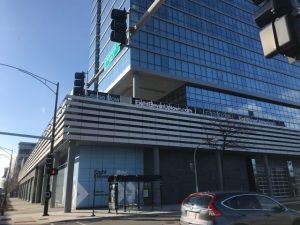
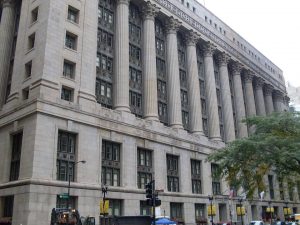



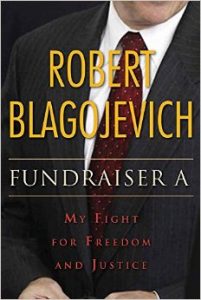

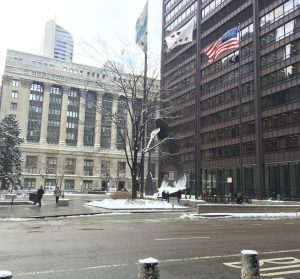
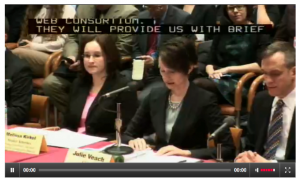
Be First to Comment